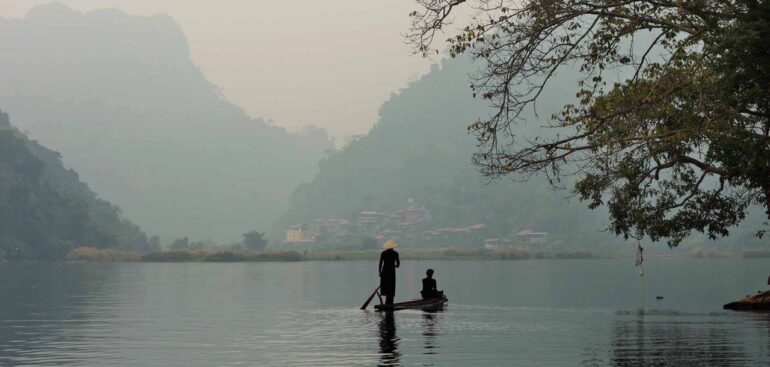
Ba Be AHP Area – Photo provided by the National Park
Ba Be National Park was recognized as an AHP Area in 2004.
Ba Be National Park was established under Decision No. 83/TTg dated November 10, 1992 of the Prime Minister with a total area of 10,048 hectares, including a strictly protected zone of 3,846 hectares; ecological restoration subdivision of 6,162 hectares and administrative and service subdivision of 40 hectares. Scientific studies confirm that this is an area rich in biodiversity.
Ba Be National Park is a complex of rivers, lakes, and forests on limestone mountains, nourished by the Ta Han, Bo Lu and Leng rivers flowing from the South and West, then the lake water flows into the Nang River in the North, creating high biodiversity. Regarding plants, Ba Be National Park has 1,268 species of higher plants, including many rare and valuable plant species recorded in the Red Book of Vietnam and the World. Precious and rare wood species such as: Nghien, Dinh, Lim, Bamboo, Lat Hoa; Among them, Ba Be bamboo is an endemic bamboo species that often grows on cliffs, creating beautiful landscapes. The National Park is also evaluated by domestic and foreign scientists as the center of highest diversity and endemism of orchids not only in Vietnam but also in the entire Southeast Asia region. There are 182 species of orchids here, some of which are endemic and only found in this area. The fauna is very rich with 470 species of vertebrates, including many rare endemic species such as White-cheeked Langur, Black Bear, Flower Cauldron, Flower-bellied Toadfish… In the fish fauna, there are 106 species of fish. belonging to 61 genera, 17 families and 5 orders. However, there are 20 species that have not been seen since the 1970s and can be considered to have disappeared from the lake.
The center of the Park is Ba Be Lake located at an altitude of about 178 m above sea level with a length of up to 8 km and a width of 500 m. This is the largest and highest natural freshwater lake in Vietnam. Ba Be Lake is also considered a “natural mountain lake of special importance in Vietnam”. Ba Be means “three lakes”, the Tay people call it “Slam Pe” (Pé Leng, Pe Lu and Pe Lam lakes). This is an ancient name that means the lake has three relatively large bulges. However, Ba Be is a continuous lake with countless small streams, stretching nearly 8 km in the North – South direction. Because of this majestic and majestic feature, Ba Be is sometimes compared to “Ha Long Bay on the mountain”. The average depth of the lake is from 17 to 23 m, the deepest point is about 35 m. The lake surface area ranges from 300 to 500 hectares depending on the season. In terms of landscape and geology, this is an area that clearly shows the historical imprint of the periods of formation of the earth’s crust. In terms of geology and geomorphology, this is a large ancient limestone area, with very special tectonic features dating back 450 million years. The interesting thing is that during the process of geological change, limestone has turned into patches of marble. According to geologists, limestone becoming marble is extremely unique and rare. In the middle of a limestone mountain area, there is a large, magical lake. The bottom of the lake is covered with a layer of clay up to 200 meters thick. This clay stratum does not allow water to drain and the lake is formed like that. The panorama of the lake is like a watercolor painting that captivates tourists who come here.
Source: Department of Natural Resources and Biodiversity



